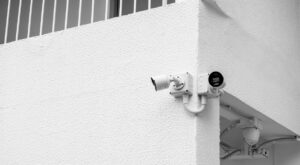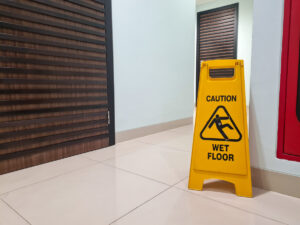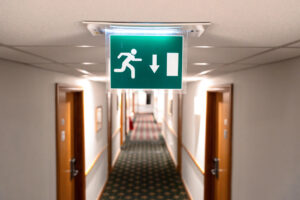The Importance of Staff Safety in Hotels
Staff Safety Requires Policies and Procedures

Your hotel staff relies on solid safety policies and procedures to address risks from slips and falls, fires, physical strain, emergencies, and potential guest harassment.
Utilize technology to protect your staff with panic buttons, surveillance cameras, and controlled access systems. Perform regular safety audits and emergency drills. Create a ‘culture of safety’ where employees feel comfortable reporting their concerns to management.
A safe staff is a happier staff. A secure environment enhances employee morale and retention, improves guest satisfaction, fosters your hotel’s reputation, and minimizes liabilities and operational disruptions.
If you haven’t already implemented these, we’ve compiled some technology and policy suggestions and best practices to consider for your staff’s safety.

Technology & Risk Prevention Safety

Stay current with security monitoring and data collection technologies, including wearable devices and smart ID cards.
- Panic Buttons
- Employees who work alone, such as housekeepers or parking lot attendants, may be at higher risk. Consider equipping these employees with wearable or portable panic buttons and location-based devices that allow security to locate an employee’s exact position. Many states and cities now require this by law for hotels.
- Surveillance Cameras
- Utilize security cameras in public areas, hallways, back offices, and parking lots to deter crime and monitor suspicious behavior. Train your security team on surveillance.
- Control Access
- Use key cards instead of traditional keys to manage access to hotel rooms and restricted areas. This tracks who is accessing which areas, prevents unauthorized entry, and gathers essential data on hotel operations.
- Check IDs
- Use strict ID checks for both employees and guests. With conferences and events, verify guest IDs against registration information to prevent unauthorized access.
Risk Prevention
- Maintain clear walkways
- Keep walkways, stairs, and lobbies free of clutter, cords, rumpled rugs, maintenance equipment, water hoses, and other tripping hazards.
- Address spills or leaks immediately
- Whether it’s a spilled glass of water or a drippy AC, address any potential slipping risk ASAP.
- Secure Equipment
- Ensure handrails are secure, stairways are well-lit and not slippery, and ladders are stable and within their load limits.
- Install clear emergency and security signage
- Ensure your staff is aware of the location of all emergency equipment and that it is clearly marked and readily accessible.
Training & Communication

Regular training and drills, and clear pathways to open communication, assure your staff that you take their safety seriously.
- Emergency Drills
- Train your staff using clearly understood emergency response plans for various crises (e.g., fires, natural disasters, or active shooters).
- Training Sessions
- Conduct regular training in real-life scenarios, including role-playing, safety equipment testing, and maintenance. Offer continuing interactive education.
- Hazard Identification
- Train your employees on recognizing safety hazards and who to report them to.
- Ergonomic Practices
- Teach proper lifting techniques and the use of assistive devices to prevent physical injuries.
Open Communication
- Employees must know who to go to to report concerns
- Make sure lines of communication for reporting concerns are transparent and open
- Employees must feel safe reporting their safety concerns
- Hotels should show dedication to continuing improvement with safety procedures
- Conduct regular safety drills, training sessions, and updates.
By implementing adequate safety measures, hotels can protect their staff, enhance guest satisfaction, and safeguard their reputation and financial well-being, ultimately leading to higher staff morale and retention.
References:
The Importance of Safety and Security in the Hospitality Industry HospitalityNet

